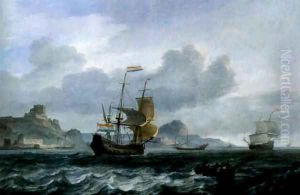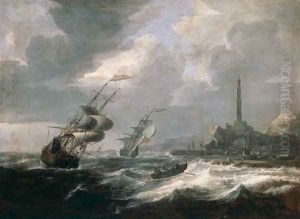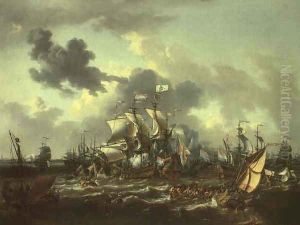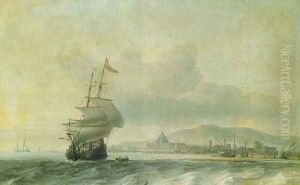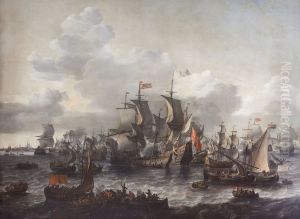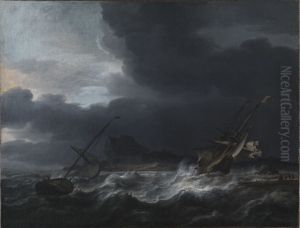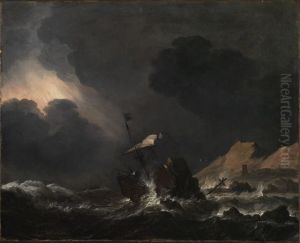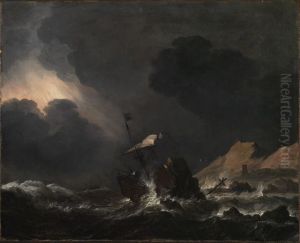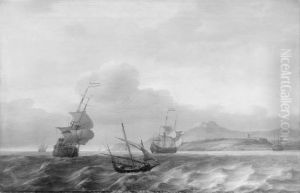Jan Theunisz Blanckerhoff Paintings
Jan Theunisz Blanckerhoff, born in 1628, was a Dutch Golden Age painter whose life and work encapsulate the vibrancy and depth of 17th-century Dutch art. Despite the scarcity of comprehensive records about his life, Blanckerhoff's contributions are recognized through the limited yet significant body of work he left behind. His oeuvre primarily consists of maritime scenes, a genre that was immensely popular in the Netherlands during this period, reflecting the nation's maritime prowess and the romantic allure of the sea.
Blanckerhoff's artistic journey is somewhat enigmatic, with little known about his training or the masters under whom he might have studied. However, his works suggest a profound understanding of light, space, and composition, traits that he shares with contemporaries such as Ludolf Bakhuizen and Willem van de Velde the Younger. Blanckerhoff's paintings are characterized by their dynamic seascapes, often capturing ships amidst turbulent waters, skillfully rendering the interplay of light and shadow, which brings a dramatic quality to his scenes.
Despite his evident skill and the quality of his work, Jan Theunisz Blanckerhoff did not gain the same level of fame as some of his contemporaries. His death in 1669 marked the end of a relatively brief career, yet his paintings continue to be appreciated for their contribution to the maritime genre of the Dutch Golden Age. They are cherished not only for their aesthetic value but also for their historical significance, offering insights into the maritime culture that was so pivotal to the Netherlands in the 17th century.
Today, Blanckerhoff's works are housed in various art collections and museums, serving as a testament to his skill and the enduring appeal of Dutch maritime painting. His legacy, while modest in comparison to the giants of his era, remains an important part of the rich tapestry of Dutch Golden Age art, reflecting the themes and concerns of a nation intrinsically linked to the sea.
